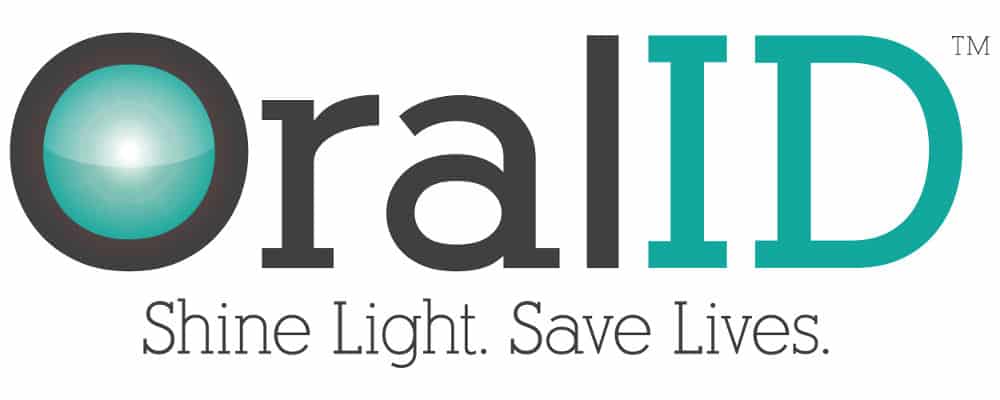With OralID’s fluorescent technology, we are able to identify oral cancer, pre-cancer and other abnormal lesions in their early stages via blue light illumination of the tissues to save lives and improve oral health.
Important to Know…
You can have oral cancer without showing any obvious signs of disease. In fact, 40% of the oral cancers found happen without the patient having any of the traditional or lifestyle risk factors at all!
Risk Factors of Oral Cancer:
- Previous history of oral cancer
- 40+ years old
- Alcohol use
- Smoking
- Smokeless tobacco
Because these risk factors don’t tell the complete story, it’s important for everyone to have an oral cancer screening no matter what their age or lifestyle. Having your dentist look for abnormal tissue using our dental technology can save your life!
Why Technology Is Crucial to Cancer Detection
Research has shown repeatedly that even the most thorough Clinical Oral Examination (COE) by itself is not enough to detect oral cancer or discriminate between benign, dysplastic lesions and oral squamous cell carcinoma. Whether the lesions are benign, dysplastic ones or early cancer, the oral tissue can look completely normal, not only to you but also to your trained and observant dentist. Without adjunct technology, early cancer and other types of lesions can be missed entirely.
Oral squamous cell carcinomas are not typically diagnosed in the early stages by clinical oral examinations alone. Most oral cancers found this way are in advanced stages. Because of this, it is crucial to have technology that aids in early diagnosis.
OralID supplies a visual roadmap for the clinician by using fluorescent technology of a blue light rated at 435 – 460 nm that makes it possible for the dentist to see abnormal lesions in the oral mucosa that would not be visible in a standard oral examination.
Clinicians across the medical and dental fields rely on this type of fluorescent technology to find abnormal tissues in the lungs, cervix, skin, GI tract and oral mucosa. The clinician can find even the tiniest, microscopic lesions they would not be able to see in a clinical oral examination, despite their expertise and careful attention. This early detection is the best way to save lives.


